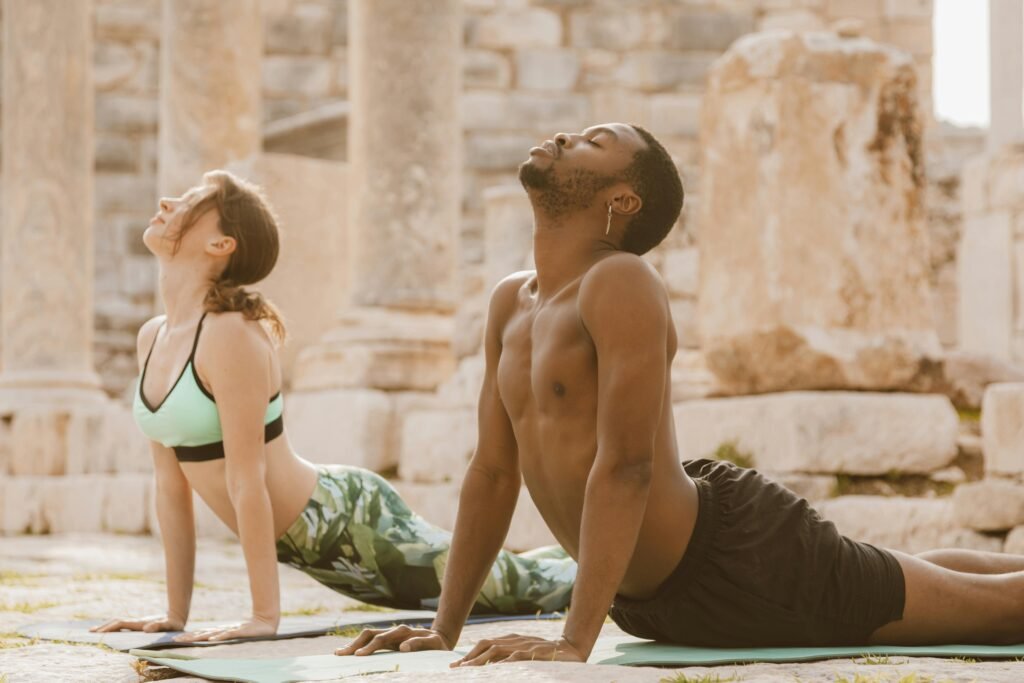Introduction to Running Shoes
Choosing the right running shoes is an essential step for anyone looking to embark on a running journey, particularly for beginners. As novice runners engage in this physically demanding activity, the importance of suitable footwear cannot be overstated. Good running shoes play a crucial role in enhancing running performance, ensuring comfort, and preventing injuries. When selecting running shoes, it is vital to recognize that not all shoes are created equal. Each design caters to different foot shapes, running styles, and surface types, which can significantly affect both the running experience and long-term health outcomes.
Wearing appropriate running shoes helps alleviate the impact forces generated during running. Proper cushioning minimizes stress on joints, while footwear designed for stability aids in maintaining proper alignment. The risk of developing common running-related injuries, such as shin splints, plantar fasciitis, or knee pain, is markedly reduced when beginners invest in quality shoes tailored to their individual needs. Hence, understanding the anatomy of running shoes, including features like cushioning, support, and heel-to-toe drop, is essential for making an informed choice.
In addition to injury prevention, the right shoes can enhance overall enjoyment of the sport. Beginners are more likely to develop a consistent running routine when they are comfortable and pain-free. Furthermore, appropriate footwear can boost confidence, allowing new runners to focus on their performance rather than discomfort or potential injury. Establishing a strong foundation with suitable running shoes sends a positive message about the significance of investing in oneself as they embark on this rewarding physical activity. A commitment to selecting the best running shoes will lay the groundwork for a sustainable and enjoyable running experience.
Understanding Your Foot Type
Choosing the right running shoes begins with understanding your foot type, which can significantly impact your comfort and performance. There are three primary foot types: flat, neutral, and high-arched. Each foot type exhibits distinct characteristics that dictate the level of support, cushioning, and stability a runner may require. Identifying your specific foot type is crucial in selecting the most appropriate running shoes.
Flat feet, also known as fallen arches, typically show minimal or no curvature along the arch when standing. Individuals with flat feet often experience overpronation, where the foot rolls inward excessively during the running phase. A running shoe designed for flat feet will usually feature ample cushioning and stability to support the arch and correct overpronation.
Neutral feet exhibit a balanced arch that maintains its shape during movement. Runners with this foot type tend to have a natural gait and usually do not require specialized shoes for support. Neutral running shoes are designed to offer a combination of cushioning and flexibility, providing the right balance for individuals with a neutral foot structure.
On the other hand, high-arched feet present a more pronounced arch. This can lead to under pronation, where the foot rolls outward, causing insufficient shock absorption. Runners with high arches may benefit from shoes that offer additional cushioning to help absorb impact and support their foot structure while also providing a little extra flexibility.
To identify your foot type, consider conducting a wet test by wetting your foot and stepping onto a surface that shows your foot’s imprint. Alternatively, you can visit a specialized running store that offers gait analysis. Understanding your individual foot type is instrumental in helping you find the running shoes that will enhance your experience and performance on the track or trail.
Cushioning vs. Stability
When selecting running shoes, two primary categories come into play—cushioned shoes and stability shoes. Each type boasts unique characteristics and serves different needs, making understanding these differences crucial for beginner runners. Cushioned running shoes are designed to absorb impact and provide a plush experience, making them ideal for runners who prefer a soft landing and those who tend to have neutral to high arches. The enhanced cushioning helps in promoting comfort during long runs, thereby reducing the risk of injury related to hard surfaces.
On the other hand, stability running shoes offer a firmer feel and are tailored for individuals who overpronate, meaning their feet roll inward excessively during a running stride. Stability shoes typically include features like medial posts or support frames that help maintain alignment and control overpronation. For beginners who may not yet fully understand their foot mechanics, identifying the right level of stability is essential, as it minimizes the likelihood of developing injuries stemming from poor form or insufficient support.
Choosing between these shoe types often depends on several factors such as running style, distance, and foot type. New runners with flat feet or those unsure about their pronation can benefit more from stability shoes, which provide the necessary support and maintain proper alignment. Conversely, runners who prioritize comfort and are more accustomed to the mechanics of running may find cushioned shoes more appropriate. Seeking expert advice at a specialty running store can also aid in determining the best fit based on individual biomechanics.
Ultimately, the right choice hinges on understanding personal preferences and running habits. Testing various models can provide insights into what feels best. This foundational decision contributes significantly to an enjoyable and injury-free running experience for beginners as they embark on their fitness journey.

Popular Brands and Models for Beginners
When embarking on a running journey, selecting the right footwear is crucial. Several reputable brands have established themselves in the running shoe market, particularly appealing to beginners due to their combination of comfort, support, and affordability. Among these, Nike, Adidas, Asics, Brooks, and New Balance stand out as leading choices.
Nike offers various models known for their sleek designs and innovative technology. The Nike Air Zoom Pegasus is a popular selection for novice runners, featuring responsive cushioning and excellent breathability. This model provides a balance between comfort and speed, making it ideal for both training and casual use. Priced around $120, it remains an accessible option.
Adidas is well-regarded for its Boost technology, providing exceptional energy return with each step. The Adidas Ultraboost is a commonly recommended model for beginners, as it ensures a soft and comfortable running experience. This shoe is particularly noted for its versatility, accommodating various running styles and terrains, and retails for approximately $180.
Asics has built a reputation for its gel cushioning systems, designed to absorb shock and enhance comfort. The Asics Gel-Excite 8 is an excellent entry-level shoe for beginner runners, offering a lightweight build and a supportive fit. It is available for around $90, making it an affordable choice for those starting their running journey.
Brooks is another brand that frequently garners praise for its dedication to comfort. The Brooks Ghost 14 provides a smooth ride and ample cushioning, making it suitable for longer runs. This model is priced around $140 and is well-reviewed for its durability.
Lastly, New Balance offers a range of shoes that cater to various foot shapes and sizes. The New Balance Fresh Foam 1080 v12 is particularly advocated for its plush cushioning and supportive fit, making it a reliable option for beginner runners at a price point of $160.
Each of these brands provides innovative solutions and options with varying features to meet beginner runners’ needs, ensuring they can select a model that best aligns with their running style and budget.
The Importance of Fit and Comfort
When it comes to selecting running shoes, fit and comfort are paramount considerations that can significantly influence a beginner runner’s experience and performance. A well-fitting shoe not only enhances running efficiency but also serves to minimize the risk of injury. It is essential to recognize that running shoes come in various shapes and sizes, designed to accommodate an array of foot types. Thus, finding the right fit necessitates an understanding of one’s unique foot measurements.
One of the first steps in choosing the perfect running shoes is to determine your foot size. It is advisable to have your foot measured in the evening when it tends to be larger due to daily activity. Additionally, take note of your foot width, as running shoes often come in various width options, allowing for a more tailored fit. Seek guidance from knowledgeable staff at specialty running stores, who can provide valuable insight into shoe fitting.
Comfort is another critical factor to consider, as it can dictate the overall enjoyment of your running experience. When trying on shoes, be sure to wear the type of socks you plan on using during your runs. Assess the cushioning and support provided by the shoe, ensuring that it adequately absorbs impact while offering sufficient stability. A good pair of running shoes should feel snug, yet allow for some movement of the toes. A test commonly recommended is to ensure that there is about a thumb’s width of space between the end of the shoe and your longest toe.
Before making a purchase, it is prudent to take the shoes for a short test run in the store, if possible. This trial can provide crucial insights into the shoes’ performance and how they feel during actual motion. Ultimately, prioritizing fit and comfort will pave the way for a more enjoyable and successful running journey for beginners.
When to Replace Your Running Shoes
Understanding when to replace your running shoes is crucial for both performance enhancement and injury prevention. Generally, most running shoes have a lifespan of around 400 to 600 miles, but this can vary based on several factors, including the type of shoe, your running style, and the surfaces you run on. For instance, if you predominantly run on rough terrain, your shoes may wear down more quickly compared to running on a smooth track.
A clear indicator that it may be time for new running shoes is the appearance of wear patterns. Inspect the outsole, specifically areas that receive the most impact, like the heel and forefoot. If you notice significant flattening, diminished cushioning, or the rubber beginning to separate from the shoe, these are signs that the shoe’s ability to absorb shock has decreased. Moreover, look for uneven wear; this can indicate that your shoes no longer provide the necessary support for your running style, which can lead to discomfort or injury.
Another critical factor is the change in your comfort level while running. If you start to notice discomfort, increased fatigue, or even pain in your feet, knees, or joints during or after runs, it may signal that your shoes have lost their effectiveness. Over time, the midsoles, which provide cushioning and support, can break down, leading to inadequate protection against impact forces. Pay attention to how your body feels; if there is a noticeable difference from when the shoes were new, it may be time to consider a replacement.
In summary, keeping an eye on mileage, visible wear, and changes in comfort level can help you determine the best time to replace your running shoes, ensuring your safety and enjoyment while running.
Budget-Friendly Options for Beginners
For beginners venturing into the world of running, finding the right pair of shoes at an affordable price can be a daunting task. However, it is essential to ensure that budget constraints do not compromise the quality and support needed for a successful running experience. Many brands offer budget-friendly options that cater specifically to novice runners. It is advisable to focus on specific brands known for providing good quality running shoes without breaking the bank.
To start, retailers often have sales or clearance events where last season’s models are discounted significantly. Websites and local stores can be exceptional resources for these deals. Online marketplaces and factory outlet stores frequently provide excellent opportunities to find quality shoes at reduced prices. In addition, subscribing to newsletters from running brands or stores can keep you informed about promotions and special offers that cater to beginner runners.
When considering which brands to explore, several well-regarded names come to mind. Brooks, New Balance, and Saucony are known for their quality and comfort, often offering budget-friendly versions of their sought-after models. Additionally, ASICS provides various entry-level running shoes that incorporate essential features for comfort and support without a high price tag. It is worth noting that while seeking affordable options, beginners should prioritize shoes that offer adequate cushioning, stability, and flexibility to prevent injuries.
Investing in a good pair of running shoes is crucial for achieving your running goals, even on a budget. Shoes that provide proper support can enhance performance and reduce the risk of injuries, particularly for those just starting. By opting for budget-friendly brands and leveraging various retail opportunities, beginners can secure a quality pair of shoes that caters to their running aspirations without exceeding their financial limits.

Additional Tips for Beginner Runners
Starting a running journey can be exciting yet daunting for beginners. In addition to selecting the right footwear, which is crucial for comfort and injury prevention, there are several other factors to consider that can enhance the overall running experience. One important aspect is proper running form. Maintaining an upright posture, with the head up and shoulders relaxed, allows for better breath control and reduces strain on the body. It is advisable to keep your elbows bent at around 90 degrees and your arms relaxed, as this will help propel you forward and conserve energy.
Warming up is another critical step that beginner runners should not overlook. A comprehensive warm-up routine can greatly enhance performance and minimize the risk of injury. Engaging in dynamic stretches such as leg swings, lunges, or arm circles prepares the muscles for running by increasing blood flow and flexibility. Allocating 5 to 10 minutes for these exercises before starting your run will set a positive tone for your training session.
Equally important is choosing the right clothing. Selecting moisture-wicking and breathable fabric is essential for comfort during your runs, as it helps to regulate body temperature and minimize chafing. Beginners should invest in proper running attire that allows for ease of movement and supports temperature control. Depending on the climate, layering may be necessary to deal with varying weather conditions.
Moreover, staying hydrated and listening to your body are critical components of your running regimen. Ensuring that you drink water before, during, and after your runs aids in recovery and performance. Furthermore, it is essential to pay attention to any discomfort or pain, adjusting distances and paces as needed to avoid overexertion. By implementing these tips, beginner runners can enhance their running experience significantly.
Conclusion and Final Recommendations
Choosing the right running shoes is a crucial step for beginner runners embarking on their fitness journey. Throughout this guide, we have highlighted various factors to consider, such as foot type, running style, and terrain. Understanding your individual needs is fundamental to selecting shoes that not only enhance performance but also prevent injuries.
When starting your running regimen, prioritize comfort and support. A well-fitted shoe can make a significant difference in your overall running experience. Make sure to assess the fit by trying on multiple pairs and considering factors like arch support and cushioning. Visiting a specialty running store, where staff can analyze your gait and recommend suitable options, can be invaluable for beginners.
Moreover, remember that the running environment plays a vital role in your shoe choice. Whether you plan to run on pavement, trails, or tracks determines the type of shoe that will provide the best traction and durability. Look for shoes specifically designed for your intended surface, as they offer specialized features tailored to various conditions.
It is equally important to replace your running shoes regularly to maintain optimal performance and comfort. As shoes wear down, their support diminishes, potentially leading to discomfort or injury. As a rule of thumb, aim to replace your shoes every 300 to 500 miles, depending on your running frequency and the shoe’s construction.
In conclusion, investing time in choosing the right running shoes will significantly contribute to a successful and enjoyable running journey. Take the steps necessary to find a pair that fits well, matches your running style, and suits your running environment. By doing so, you will not only enhance your performance but also foster a lifelong passion for running.





I’ve been waiting to feel your touch… ready? – https://rb.gy/es66fc?Tisalino